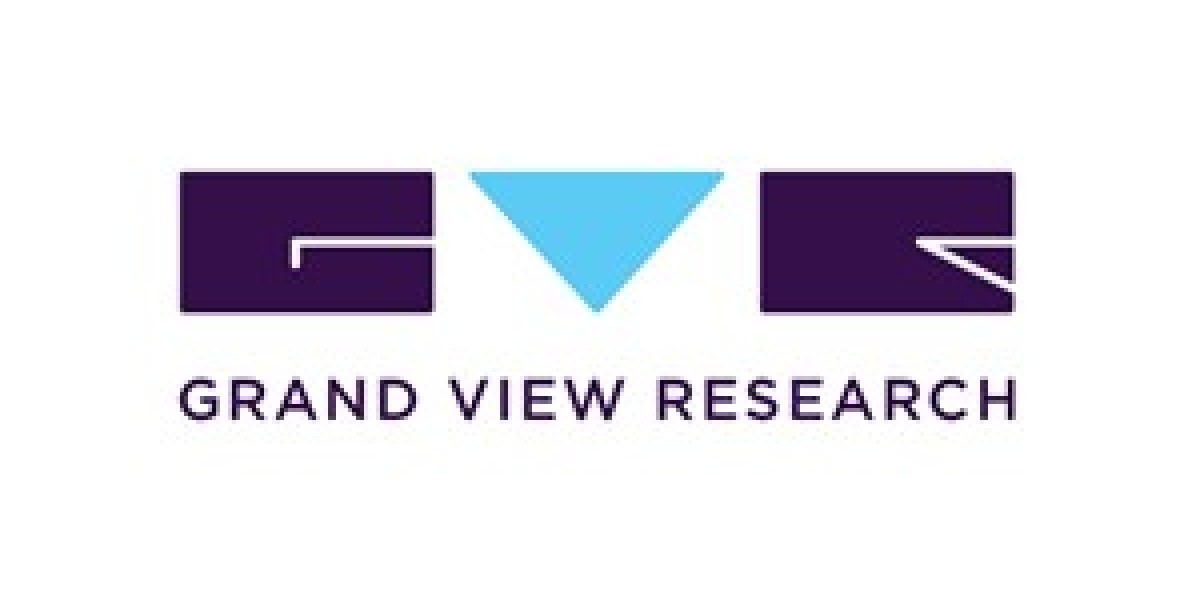3D Scanning Industry Overview
The global 3D scanning market size was valued at USD 4.50 billion in 2018 and is expected to grow at a compound annual growth rate (CAGR) of 8.4% from 2019 to 2025. It is driven by advancements in technology and increasing R&D spending. The emergence of structured light technology, against the traditional laser dot or laser line technology, is also expected to fuel the growth.
The incipient trends, such as Mixed Reality (MR), Internet of Things (IoT), and the rising conjunction between wearable devices in automotive fabrication and aerospace design are anticipated to drive the market. The convergence of these technologies may provide enhanced interactive and immersive experiences. An increasing number of advanced wearable devices, complemented by portable and sophisticated 3D scanners, could potentially make the human-techno interaction more immersive, realistic, and adjunct to fabrication processes.
Gather more insights about the market drivers, restrains and growth of the 3D Scanning Market
In the manufacturing sector, 3D scanning technology has emerged as a crucial component of modern-day quality control and inspection systems. The manufacturing sector experiences several challenges, wherein safety, schedule, and cost, have ascended beyond the set budget limits, owing to inadequate and incorrect dimensional control procedures.
Technological advancements in the hardware and software segment in the recent past have revolutionized the designing industry significantly. Increasing user expectations to experience and feel the product in a real environment has led to the development of 3D scanning and printing devices that create a strong illusion of real-life experience and portray a less retro-manufactured look. The realistic representation of the product design during fabrication makes it more lucrative for the existing vendors to appeal to a large customer base through dynamic designs. Moreover, graphics and image rendering play an important role in delivering an enhanced 3D demonstration. Innovative technologies, such as 3D effects and interactive graphics, provide a synchronized experience to the user.
For instance, LED is a standard lighting technology for 3D scanning, owing to its small size and low heat emissions. Additionally, increasing adoption of high-performance Complementary Metal-Oxide Semiconductor (CMOS) sensors against Charge-Coupled Device (CCD) imagers is also expected to favorably influence the market growth. CMOS sensors significantly reduce manufacturing costs, provide high frame rates at relatively high resolutions, consume less power, and require less complex electronic drive circuits. The market is also expected to benefit from the advancements in the consumer electronics industry such as powerful embedded processors and high-bandwidth USB communication channels.
Furthermore, the limitations occur due to the restrictions of the equipment/components used. The components necessary for the construction of a 3D scanner, such as lenses and other electronic components, need to be fault-free and reliable to ensure the smooth functioning of a scanner. Several trials and errors were carried out to improve the functionality of the scanning systems. All these technical improvements involve huge investments. The expenditures are done in R&D processes and high-cost components to achieve higher accuracy, precision, and reliability needs bigger amounts; ultimately making the product costlier.
Browse through Grand View Research's Next Generation Technologies Industry Research Reports.
- The Mixed Reality (MR) market is expected to witness a substantial growth over the forecast period, owing to advances in hardware technologies and sophisticated mobile software.
- The global Internet of Things (IoT) market size was valued at USD 1.18 billion in 2023 and is projected to grow at a CAGR of 11.4% from 2024 to 2030.
3D Scanning Market Segmentation
Grand View Research has segmented the global 3D scanning market based on product type, range, component, type, application, end-user, and region:
3D Scanning Product Type Outlook (Revenue, USD Million, 2014 - 2025)
- Laser Scanner
- Structured Light Scanner
- Optical Scanner
- Others
3D Scanning Range Outlook (Revenue, USD Million, 2014 - 2025)
- Short Range
- Medium Range
- Long Range
3D Scanning Component Outlook (Revenue, USD Million, 2014 - 2025)
- Hardware
- Software
- Service
3D Scanning Type Outlook (Revenue, USD Million, 2014 - 2025)
- Tripod Mounted
- Fixed CMM Based
- Portable CMM Based
- Desktop
3D Scanning Application Outlook (Revenue, USD Million, 2014 - 2025)
- Reverse Engineering
- Quality Control & Inspection
- Virtual Simulation
- Others
3D Scanning End-user Industry Outlook (Revenue, USD Million, 2014 - 2025)
- Automotive
- Aerospace & Defense
- Healthcare
- Architecture & Construction
- Others
3D Scanning Regional Outlook (Revenue, USD Million, 2014 - 2025)
- North America
- US
- Canada
- Mexico
- Europe
- Germany
- UK
- Spain
- Asia Pacific
- China
- Japan
- South America
- Brazil
- Middle East and Africa
Key Companies profiled:
- Nikon Metrology NV
- Autodesk, Inc.
- Hexagon AB
- FARO Technologies
- David Vision Systems GmbH
- Basis Software, Inc.
- Artec 3D
- Fuel3D Technologies Limited
- Creaform, Inc.
- GOM GmbH
Key 3D Scanning Company Insights
The manufacturers distribute their products primarily through direct sales channels. However, they also use independent Original Equipment Manufacturers (OEMs), Value Added Resellers (VARs), consultants, distributors, and system integrators to market their products. Organizations may deploy the vertical integration strategy to increase control over the cost and procurement activities.
Order a free sample PDF of the 3D Scanning Market Intelligence Study, published by Grand View Research.



